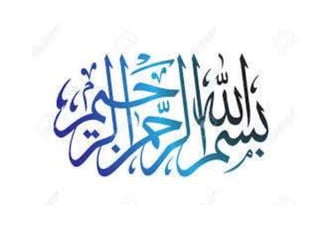
Introduction To Computing
- 2. Lecture 1 Ms. Shah Rukh Muzammil Introduction to Computing
- 3. Overview of today’s lecture Course Objectives Introduction to what a computer system is? Data Vs Information. What are the basic components of computer system. Memory and Storage Devices.
- 4. Computer Systems Overview of Computer Systems
- 5. What is a Computer…? • Man-made, programmable electronic machine that can store, retrieve, and process data according to a given set of instructions • Simply we can say ‘It is electronic/intelligent device which can convert raw DATAin to meaningful INFORMATION ’
- 6. DATA • Data can be defined as ‘Raw facts’, ’Meaning less things’ or ‘Un-processed things’ • Normally data can be input to a system. • E.g.- In an organization: employee’s name, number of hours of work, employee address, and employment commenced date, etc
- 7. INFORMATION • Processed data and which has a meaning unlike data. • Normally Information are output from a system. • E.g.-In an organization: monthly salary of an employee, total sales in a particular month, etc
- 8. Total Computer System • A system is a collection of elements that work together to achieve a common objective. Total Computer System Hardware Software Liveware
- 10. Computer Hardware • The physical components (tangible parts) of a computer known as Hardware. • E.g.- System unit, Mouse, Keyboard, Monitor etc
- 11. Software • Collection of programs or applications, which contain the instructions that makes the computer work. • E.g.- Windows XP,Ms-Word, Java, AVG, Virus,
- 12. Liveware • The computer users are known as Liveware. • It can be anyone who use the computer.
- 13. Hardware categorization • Mainly computer Hardware can be categorized as follows, – Processor/CPU – Memory & integrating devices – Input devices – Output devices – Storage devices – Communication devices
- 14. Processor/CPU • Can be defined as the ‘Brain’ of the computer. • All the commands are execute from here. • Mainly consists with two parts, »ALU »CU
- 15. ALU-Arithmetic & Logic Unit • Responsible for performing Arithmetic functions such as, – Addition (+) – Subtraction (-) – Division(/) – Multiplication(*) • And Logical functions like, – Is Greater than (>) – Is Less than(<)
- 16. CU-Control Unit ware of• Responsible for controlling all the Hard the computer and all the Software of the computer. • All tasks of the computer has been runs under the direct co-ordinations of CU.
- 17. Memory • There are two types of memories within computer, – RAM (Random Access Memory) – ROM (Read Only Memory)
- 18. RAM • Random Access Memory. • The currently processing data are held within the RAM. • Measures as a capacity. (MB,GB) • Temporary, Volatile.
- 19. ROM • Read Only Memory. • If Compare with the RAM has low capacity. (Measures with KBs) • Contain a special software called ‘Firmware’, which use to turn on the computer (booting) properly by recognizing the Hardware devices at the system start-up. • Firmware also known as ‘BIOS’, Start-up program, ‘CMOS’ setup. • Non-volatile, Permanent memory type
- 20. Storage Devices • The memory locations where use to store Data/Information permanently. • E.g. – HDD (Hard Disk Drive) – CD-ROM – DVD-ROM – Tape Drive • Much large in capacities. (Measures by using MBs or GBs)
- 21. Communication Devices • Hardware devices use for the communication purposes. • E.g. – MODEM – Router – Switch/Hub – Repeater
- 22. Understand the Basic Components of Computer Systems for Discussion in next class. Home Task Home Tasks contribution may be included in grades Policy